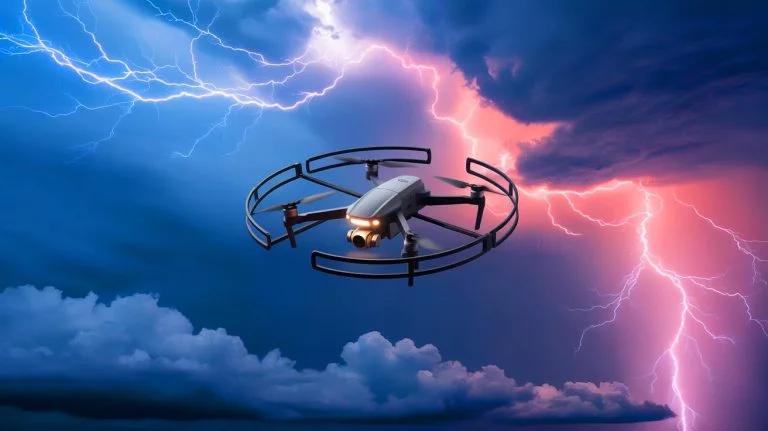| IN A NUTSHELL |
|
The unpredictability of lightning has long posed challenges for scientists and engineers, particularly in mitigating damage during severe weather events. However, a groundbreaking experiment by Nippon Telegraph and Telephone Corporation (NTT) suggests a promising future where lightning can be summoned and controlled using drones. By successfully triggering a lightning strike with a drone, NTT has opened new avenues not only for weather management but also for potential renewable energy solutions. This innovative approach could transform how we protect sensitive equipment and communities from the destructive forces of nature.
NTT’s Pioneering Experiment
In a remarkable display of technological innovation, NTT conducted a series of experiments in the mountainous region of Hamada City, Japan. Between December 2024 and January 2025, the telecommunications giant utilized drones to trigger lightning strikes at an elevation of approximately 3,000 feet. This ambitious project aimed to explore the potential of using drones to mitigate damage from thunderstorms, which annually cause significant economic losses. According to NTT, lightning results in damages amounting to 200 billion yen, or about $1.4 billion, each year.
The experiment’s success lies in its dual accomplishment: creating a drone capable of withstanding the immense energy and temperature of a lightning strike, and developing a method to trigger the strike itself. By addressing these challenges, NTT has not only demonstrated a novel application of drone technology but also paved the way for further research into controlled lightning strikes and energy capture.
Designing a Lightning-Resistant Drone
One of the primary challenges NTT faced was designing a drone that could endure the extreme conditions of a lightning strike. To achieve this, the team developed a special conductive cage to house the drone. This cage directed the lightning strike away from the drone’s internal components, ensuring its operational integrity. Remarkably, the cage is designed to fit standard, commercially-available drones, making the technology accessible and versatile.
The cage’s design also prevents magnetic interference with the drone’s operation by distributing the lightning strike radially. In rigorous tests, the cage withstood 150 kiloamperes, which is five times the strength of a typical lightning strike. This robust design ensures that drones can operate safely in severe weather conditions, offering a new layer of protection for both equipment and communities.
Triggering Lightning: A Complex Challenge
While designing a lightning-resistant drone was a significant achievement, the more complex challenge was finding a method to trigger lightning strikes. Simply deploying drones into stormy skies would not be sufficient to attract lightning. To solve this, NTT engineers tethered the drone to the ground with a conductive wire. When an increase in electric field strength was detected, indicating an approaching storm, they activated a high-voltage switch to alter the electric field around the drone.
This strategic manipulation of the electric field effectively encouraged lightning to discharge near the drone. On December 13, during a storm, a field mill detected the approaching weather, prompting NTT to initiate the process. The result was a successful lightning strike recorded near the drone, demonstrating the feasibility of this method for controlled lightning management.
Future Implications and Energy Potential
NTT’s success in triggering and controlling lightning strikes opens up exciting prospects for future applications. Beyond enhancing weather safety, the company envisions harnessing the energy of lightning as a renewable resource. The team is already focusing on developing technologies to capture and store lightning energy, which could be used for power generation.
This ambition reflects a broader trend towards sustainable energy solutions and highlights the potential of innovative technologies to address global challenges. By transforming the destructive power of lightning into a valuable resource, NTT’s research could significantly impact future energy strategies.
As NTT continues to refine its technology and explore new applications, the question remains: can we fully harness the power of lightning for practical use? This pioneering research not only challenges our understanding of weather phenomena but also invites us to reconsider the potential of natural forces in shaping our technological future.
Did you like it? 4.6/5 (21)







Wow, this is some sci-fi level stuff! Lightning control? Next thing you know, we’ll be controlling earthquakes. 🤯
How do they plan to store the energy from lightning? Seems like a massive challenge.
Is it safe to mess with lightning like this? What if something goes wrong? 😬
This is such a cool application of drones and technology. Thanks for sharing!
Can this technology be scaled up, or is it just for small-scale experiments?
I wonder if this could be used to protect entire cities from lightning strikes.